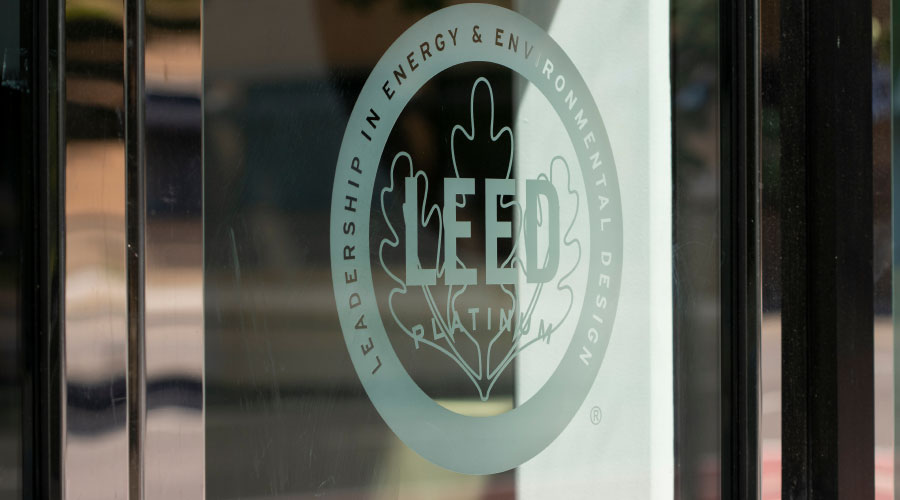Bridge The Gap From Construction To Efficient Operations
Between the end of a facility's construction and the beginning of its operations, there's a substantial transition period where most, if not all, of the professionals who designed, installed and verified the initial conditions of the building cease to be involved. A new team of people begins to run the building, taking on the phase with far greater costs and environmental impacts. This shift in personnel presents one of the greatest risks to a building's ability to bridge the gap from construction to efficient operations.
Additionally, buildings naturally trend toward "performance decay," a phenomenon responsible for as much as 30 percent in efficiency loss in the first four years of operation, according to an article in the August 2009 issue ASHRAE Journal titled "Sustaining Our Future by Rebuilding Our Past" by former ASHRAE president Gordon Holness. Performance decay refers to the inherent continuous degradation of any mechanical or other complex system. For many buildings, performance decay is what usually happens — but it doesn't have to happen. This ongoing decline from the highest "potential efficiency" possible in a facility has many sources and can vary from one facility to the next. (See "Roots of Performance Decay" below.)
Very few building owners take steps to prepare for the construction/operation gap and performance decay. There are steps that can be taken, and they can be summed up in two words: ongoing commissioning.
Transition Gap
Today, many new buildings follow a decades-old approach to the design and construction process, the contractual agreements the teams are under, and the protocols of communication between team members. Most importantly, the typical roles represented at the table haven't changed in a very long time, although buildings have become far more technologically complex and are delivered in less relative time for ever-decreasing fees.
The process of creating a new building typically follows the linear path of planning, design, construction, turnover and operations.
In this model, we find that, during the earliest and most critical phases of planning and design, not all members of the ideal team are present. Of particular note, rarely is the facility manager present during design discussions. The person expected to manage an operations and maintenance staff and effectively uphold the performance of a building should clearly have input during the design phase, and yet rarely is this person consulted until much later in the process.
Another weakness in the traditional model is that it is common for design roles to remain segregated and communication minimal with all parties rushing to be "done" in order to preserve profit. Everyone involved up to construction completion essentially leaves, turning over the facility to an entirely new group of professionals. Even assuming the building is in top shape upon delivery, the new staff lacks the "back story" of why systems were designed the way they were and why settings were set the way they were, and without this knowledge, the operations and facility management staff can't possibly be expected to achieve the performance set forth in design.
Ultimately there is no "set it and forget it" button on building systems. Even if the building team successfully bridges a building to its operations phase, building systems are complex, interdependent, and subject to changing occupant needs and at times operator error. Regardless of the building's potential success on day one, a program of persistence must be employed in order to manage what amounts to a continually changing playing field due to performance decay and the changing needs or uses of facilities. A comprehensive, ongoing commissioning program is the only way to preserve energy efficiency and facility performance without a primary focus on retrofits, upgrades, or replacements. Some may ask about the effectiveness of benchmarking, energy audits and retro-commissioning in improving the operational efficiency of buildings. These are great tactics, but on their own they lack any payback at all or are largely onetime events that ignore performance decay. That's why the best solution is a strategic ongoing commissioning plan. (See "Three Steps to an Ongoing Commissioning Plan.")
Roots of Performance Decay
The causes of performance decay can typically be categorized in two ways.
1. Preventive maintenance related
- Temperature and static sensor failures and/or the natural occurrence of sensors slowly falling out of calibration
- Valve and damper actuator failures or loose or disconnected drive shafts
- Piping corrosion
- Dirty filters, ducts and coils
- Leakage and infiltration/exfiltration related issues
- Overdue equipment upgrade or replacement needs
2. Building automation related
- Underutilized or unutilized features such as operation scheduling, temperature or static resets or setbacks and sequencing/staging capability
- Temporary manual operation never returned to automation
- Simultaneous heating and cooling (could be related to b. directly above or also be a preventive maintenance related oversight)
- Lack of proper updates to program from BAS manufacturer
- Incorrect setpoints either from initial occupancy or to fix a temporary issue and not returned to correct value
- PID loop control tuning
Some of these can have significant cost-related impacts on a building over the course of its useful life, especially when the issues persist for years, continually impacting overall performance. But the truth is far worse: It is not uncommon for buildings to experience each and every one of the issues listed above, compounding the reductions in efficiency while increasing operational budgets. This is why Texas A&M University's case studies document that typical savings from Continuous Commissioning® range from 8 to 40 percent, averaging 22 percent.
— Jamie Qualk |
Related Topics:













